The Boxee Box Review
by Anand Lal Shimpi & Ganesh T S on November 23, 2010 5:42 PM EST- Posted in
- Gadgets
- Media Streamer
- HTPC
- Boxee Box
Inside the Boxee Heptahedron
I suspect a cube was too boring, so D-Link lopped off a portion of the common shape and made the box rest at an angle. Calling it the Boxee Heptahedron might scare away too many potential customers so the two companies settled on the name Box.
The base is made out of a soft rubber in bright NVIDIA green (perhaps homage to the Tegra 2 that originally powered the box). The remaining sides are black plastic. The Boxee logo on the front glows bright green when the box is powered up.
Around back there’s a 10/100 ethernet port, HDMI output, optical and RCA stereo out options for audio, DC power input and two USB ports for attaching USB sticks or external hard drives. There’s an SD/MMC card reader on the side and internally you’ve got 802.11n wireless support.
The Box is small, measuring 12.7cm x 11.43cm x 8.9cm - 12.7cm (5" x 4.5" x 3.5 - 5.0" - L x W x H). It doesn’t really match any home theater gear but it’s stylish enough to not matter.

From left to right: Nikon D70, Boxee Box, Apple TV
Internally the Boxee Box is driven by an Intel CE4100 SoC and paired with 1GB of DDR3 memory.
The entire system is cooled by a single fan. The fan isn't loud but it is noticeable in an otherwise silent room thanks to its groaning sound. I couldn't hear it over any of the content I was watching however, even during quiet moments.
The Boxee Box is pretty easy to take apart, you just need a long Phillips head screwdriver with a small bit. Peel off the bright green rubber on the bottom to reveal the first six screws you'll need to remove.
Once inside there are a dozen or so other screws you'll need to remove to gain access to the motherboard (the gallery above shows you most of the process). The power supply is external which keeps a lot of clutter out of the case itself. The heatsink uses a thermal pad to make contact with the SoC making removing/replacing it a breeze:
The motherboard itself is tiny, much smaller than a mini-ITX board. I'm sure a lot of folks would be very pleased if Intel or someone else made a reference design like this that you could just buy on your own:
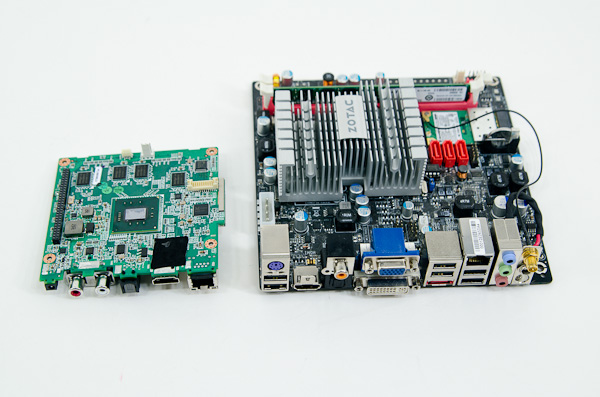
Boxee Box CE4100 motherboard (left) vs. Zotac ION mini-ITX motherboard (right)
See that little black tape covering a piece of the Boxee motherboard? Lift it up and you'll see a pretty significant rework on the board:
See the resistor mated over R12 (about half an inch from the top of the board in the above picture)? That's a rework. An error in the original PCB layout that had to be corrected after the fact. There's actually another one about half an inch lower. These two reworks appear to be on all Boxee motherboards. The black tape is used to keep them from being knocked loose. Future revs of the board will likely correct this problem and avoid the rework entirely. It's not a problem at all and won't impact reliability, just interesting to see on a final retail product.
The CE4100 die measures approximately 8mm x 12mm, putting its total die area at 96mm2. That's roughly 3.6x the size of the Pineview Atom in current netbooks, but still a pretty small die. By manufacturing it at 45nm the CE4100 is cheap to make as it doesn't require any capacity from Intel's latest 32nm fabs.


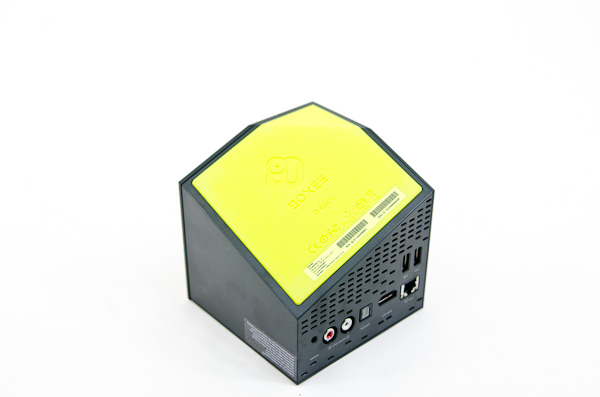








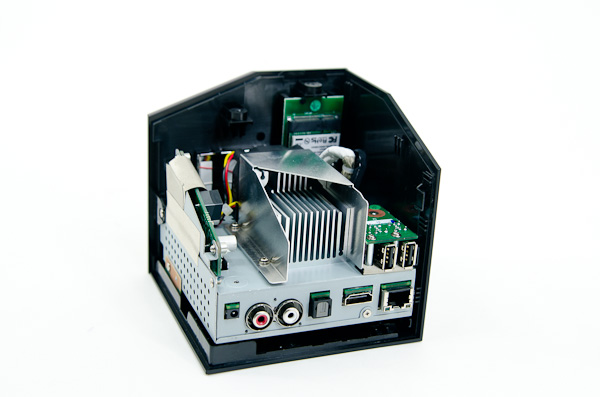
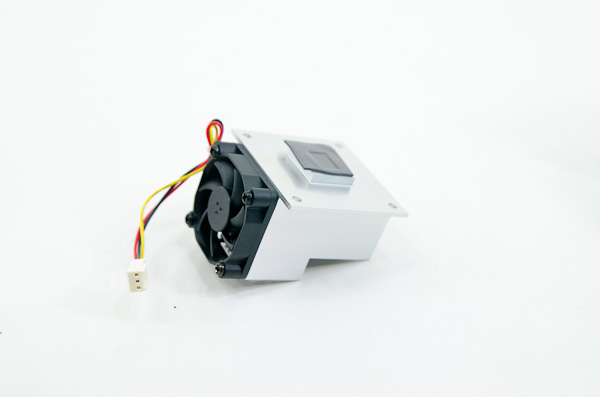
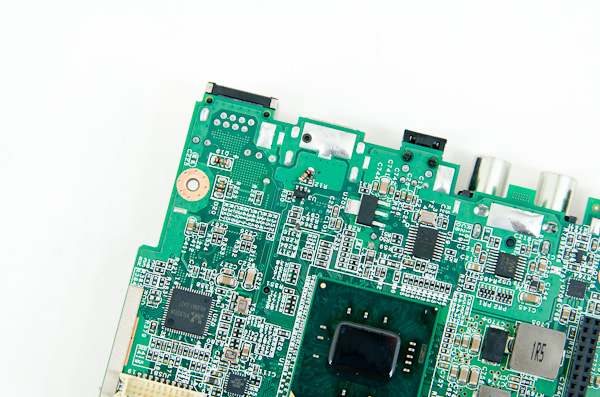









43 Comments
View All Comments
ganeshts - Tuesday, November 23, 2010 - link
At full shutdown, the power adapter consumes 0.5W (also enables switch on from RF remote).If you are worried about the 0.5W, better to pull the plug out of the socket.
Ethaniel - Tuesday, November 23, 2010 - link
A fantastic review. Too bad the little box has holes everywhere. If things don't get fixed, I guess someone will find a way to hack it and start torrenting the hell out of it...earthzero - Tuesday, November 23, 2010 - link
A comparison vs other solutions like Playon with Media Center and Mezzmo streaming directly to a Samsung or some other DLNA device would be worth comparing this to...Alexstarfire - Tuesday, November 23, 2010 - link
I'd love to have a streaming device that was capable of playing MKVs perfectly for only a couple hundred dollars. Not being able to play ASS subtitle files all but makes streaming devices useless for me. I already have an HTPC, but something like this would be far easier to set up, use, and transport.Cr0nJ0b - Wednesday, November 24, 2010 - link
I'm just astounded that this isn't an demonstration of an alpha release product. reboots are to be expected? really? I'm sorry, I don't care how cutting edge you are...if you sell something to the general public as a finished product and not a "build it yourself" "fix it your self" hobby kit, you need to have higher standards. I was actually thinking of buying a boxee box this week...thank you for the review. I'll stay away.dagamer34 - Wednesday, November 24, 2010 - link
Something I'd buy a V2 of the product when hardware/software issues are hammered out. Though I'm wondering if they are ever going to support Bluray menus...probedb - Wednesday, November 24, 2010 - link
A nice review yet again but I'd love a decent round up of some of the more popular streamers like the PlayON!HD etc.I'm particularly interested in how good they are at deinterlacing content ripped from DVDs as that's how I have them backed up.
Krofojed - Wednesday, November 24, 2010 - link
I don't have any experience with watching TV online, but my impression is that the access to music and video tends to be conutry-specific. So does this thing work outside USA? (I haven't read every word of the review, so if this is mentioned somewhere, I apologize.)Definol - Wednesday, November 24, 2010 - link
You can download boxee and try it on your computer to see what is available in your country. I'm pretty sure that netflix and hulu aren't available outside of the usa without using a vpn.I live in europe and I can't access either of them.
Shadowmaster625 - Wednesday, November 24, 2010 - link
Why not just buy an Xbox 360 and do the same and more?